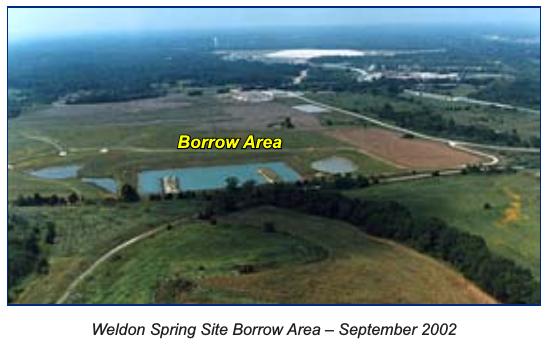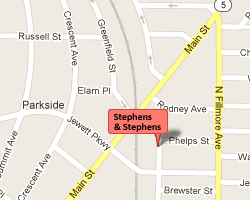Weldon Spring Plant
Home / Areas of Practice / Energy Employees Occupational Illness Compensation Program Act (EEOICPA) / EEOICP: Facility List / Weldon Spring Plant
Also Known As: Mallinckrodt, Weldon Spring Chemical Co., Weldon Spring Site Remedial Action Project (WSSRAP), WSS
State: Missouri
Location: Weldon Spring
Time Period: 1955-1966; October 1, 1985–2002 (remediation)
Facility Type: Department of Energy
Facility Description
In 1955, the U.S. Department of the Army (Army) transferred 217 acres of what had been the Weldon Springs Ordnance Works to the U.S. Atomic Energy Commission (AEC) for construction of a uranium feed materials plant. The AEC constructed the Weldon Spring Uranium Feed Materials Plant at this location and contracted with the Mallinckrodt Chemical Company to operate the plant starting in June 1957. The plant was used for uranium refining activities in support of the national defense program. The AEC closed the plant in December 1966 after deciding it was obsolete.
After closing the plant, the AEC transferred the plant and the land back to the Army on December 31, 1967. On October 1, 1985, custody of the chemical plant was retransferred from the Army back to the DOE, which was given responsibility for remediation of the plant. The surface decontamination of the plant was completed in October 2002.
CONTRACTORS: Mallinckrodt Chemical Company (1957-1966); Bechtel National Inc. (1981-1985); MK-Ferguson Company and Jacobs Engineering Group (1986-2002)
Listing
Weldon Spring Plant is listed as a Department of Energy (DOE) site under the EEOICPA.
Compensation
As of 06/14/15 the total compensation paid under Parts B and E of the EEOICPA, including medical compensation, for workers suffering from the effects of having worked at the Weldon Spring Plant is $43,167,341.
Weldon Spring Plant Workers
If you or your parent worked at this or any other DOE or AWE facility and became ill, you may be entitled to compensation of up to $400K plus medical benefits from the US Department of Labor. Call EEOICPA Counsel Hugh Stephens at 1-855-EEOICPA (336-4272) or fill out the form to the right, whether or not you have already filed a claim and even if your claim has been accepted or denied.
We can help with all OWCP (Federal Workers Compensation) claims, impairments, wage loss and health care. 2495 Main Street, Suite 442, Buffalo, NY 14214.
Site Description
The Missouri Department of Conservation (MDC) approved a plan on June 9, 1995, allowing the U.S. Department of Energy (DOE) at the Weldon Spring Site Remedial Action Project (WSSRAP) to excavate nearly 2 million cubic yards of clay material from land in the Weldon Spring Conservation Area. Clay soil from a borrow area was used to construct the permanent disposal facility at the Weldon Spring site. Clay soil was chosen to construct the disposal facility because it has low permeability when compacted. Extensive tests showed that the proper quality and quantity of material was located in the Conservation Area within 2 miles of the disposal facility and approximately 0.25 mile east of Francis Howell High School across Highway 94. The excavated clay soil was used for foundation backfill, clay liners, clean-fill perimeter dikes, and the radon barrier in the disposal cell.
A cultural resource survey was conducted at the Borrow Area easement to determine that soil removal would not disturb any archeological or historical sites. The land also was assessed from an ecological standpoint to check for threatened or endangered species and wetland areas. DOE signed a separate agreement with MDC to mitigate any loss of wetland area. The agree- ment authorized the creation of a wetlands area in the August A. Busch Conservation Area. This wetlands area provided an aquatic habitat to replace areas that were disturbed during work at the Chemical Plant site.
More than 213 acres, including 150 acres for borrow development and operations, constitute the Borrow Area and dedicated haul road that leads from the borrow source to an entrance at the north side of the Chemical Plant site. The haul road was dedicated to borrow operations to separate project vehicles and equipment from public roadway users. DOE reached an agreement with the Missouri Highway and Transportation Department, Francis Howell School District, and MDC that permitted a portion of Highway 94 to be realigned to allow for a grade separation crossing. The separation routed borrow traffic through an underpass at Highway 94. Construction of the grade separation in 1996 included reduction of two dangerous curves in Highway 94 that had been the scene of numerous accidents.
The hauling operation took place during the construction season from spring to fall each year. Scrapers hauled material from the Borrow Area 10 hours each day during the business week. Nearly 100,000 round trips were made.
Borrow Area operations for the 2001 construction season included the modification of an existing sedimentation basin and the excavation of approximately 100,351 cubic yards of soil to complete the disposal cell. By the time the cell was completed in October 2001, approximately 1.4 million cubic yards of soil from the Borrow Area had been used in cell construction.
In 2002, the continuation of the Hamburg Trail, an extension of the Katy Trail State Park, was constructed. The Hamburg Trail extends the Katy Trail along the Quarry haul road to the Weldon Spring site and then proceeds to the Borrow Area, eventually crossing Highway 94 at Highway D. From there, the trail proceeds along a route parallel to Highway D to the headquarters building of the Missouri Department of Conservation’s August A. Busch Memorial Conservation Area.
When Borrow Area operations were completed, the area was graded to drain in accordance with a final restoration/reclamation plan approved by MDC and the Soil Conservation Service. Phase I Borrow Area restoration was completed in September 2001, and the Borrow Area was turned over to MDC in March 2002. Phase II seeding was completed and turned back to MDC in May 2002. The 6,000-square-foot maintenance building was turned over to MDC in October 2002.

DOCUMENTS
NIOSH SEC Petition Evaluation Reports
Petition 143 (Jan 1, 1957 to Dec 31, 1966)
SEC Petition Evaluation Report, Petition SEC-00143, Rev #: 0
Report Submittal Date: April 16, 2010
Technical Basis Documents
Site Profile
Weldon Spring Plant – Introduction
Effective Date: 05/24/2013, Revision: 01
Weldon Spring Plant – Site Description
Effective Date: 03/24/2017, Rev. 02
Weldon Spring Plant – Occupational Medical Dose
Effective Date: 01/30/2013, Revision: 01
Weldon Spring Plant – Occupational Environmental Dose
Effective Date: 03/29/2017, Rev. 02
Weldon Spring Plant – Occupational Internal Dose
Effective Date: 03/14/2017, Rev. 03
Weldon Spring Plant – Occupational External Dosimetry
Effective Date: 02/06/2013, Revision: 01
SC&A
Review of the NIOSH Site Profile for the Weldon Spring Site in Weldon Spring, Missouri
February 2009
Share this:
EEOICPA CLAIMS
If you or your parent worked any of the DOE or AWE facilities listed on this website and became ill, you may be entitled to compensation of up to $400K plus medical benefits from the US Department of Labor.
Call EEOICPA Counsel Hugh Stephens at 1-800-548-4494, email hstephens@stephensstephens.com, or fill out the form below whether or not you have already filed a claim and even if your claim has been accepted or denied.
Contact Us
"*" indicates required fields
*note: Submission of this form does not establish an attorney-client privilege.
Contact Us
Address:
2495 Main Street, Suite 442
Buffalo, New York 14214
Phone:
(716) 852-7590
Fax:
(716) 852-7599
After Hours:
(716) 208-3525
Email Us:
R. William Stephens, Esq.
R. Hugh Stephens, Esq.
Lisa P. Neff, Esq.

